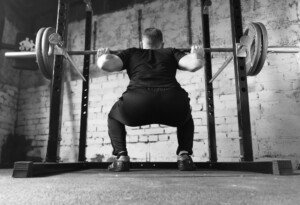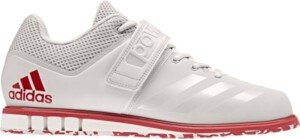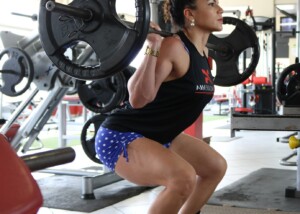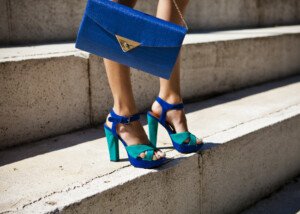
Find out how weight plates compare to weightlifting shoes when you want to elevate your heels to do squats.
Which is better for the back squat: weightlifting shoes or plates? Or, to put it another way, what’s the difference between using plates and wearing weightlifting shoes when it comes to performing a good back squat?
People in muscle building forums have actually asked if there’s any difference between the elevation from placing one’s heels on plates and the elevation produced by a weightlifting shoe.
If you must choose between plates and weightlifting shoes, choose the shoes. The shoes are on your person and thus eliminate the problem of instability.
They eliminate the hassle of looking at your feet to make sure they’re positioned just right on the plates.
They eliminate the hassle of aligning the plates up just perfectly so that your feet are flush.
Finally, weightlifting shoes eliminate the precariousness of stepping backwards and onto a platform while 225 pounds are across your back.

Many different styles and makes of weightlifting or powerlifting shoes are on the market.
The difference between plates and weightlifting shoes for the squat, then, is obvious: a built-in stability with the footwear.
Another difference between plates and weightlifting shoes is that when you use plates, the middle of the bottom of your foot is not in contact with anything. It’s more of an unnatural foot position than with the shoes.
Some feel they must elevate their heel because perhaps they’ve seen a photo of Arnold doing squats this way. Many people who elevate their heels for squats actually don’t need to do this.
Others who elevate their heels have “bad anthropometrics” for the back squat, meaning, their femur length exceeds their torso length, or if these body parts are equal in length, their shin bones are disproportionately short relative to femur length.
Elevating the heels artificially lengthens the shin bones.
Heel elevation shifts knees forward just a little bit, which in turn shifts the shoulders forward, which enables your torso to be less leaned forward to maintain balance during the back squat.
You’re thus able to squat lower without leaning as far forward.
However, the artificial lengthening of the lower legs does not mimic the real thing, which is why heel elevation can strain the knees with heavy squats.
Furthermore, heel elevation de-emphasizes butt and hamstring activation and concentrates more of it in the quadriceps.
The recommendation for those with disproportionately long femurs who struggle with the back squat is to employ neither weightlifting shoes (about $100) and plates (unstable), and instead use a wide stance with feet pointed slightly outward. In addition, work on improving hip flexibility.


























